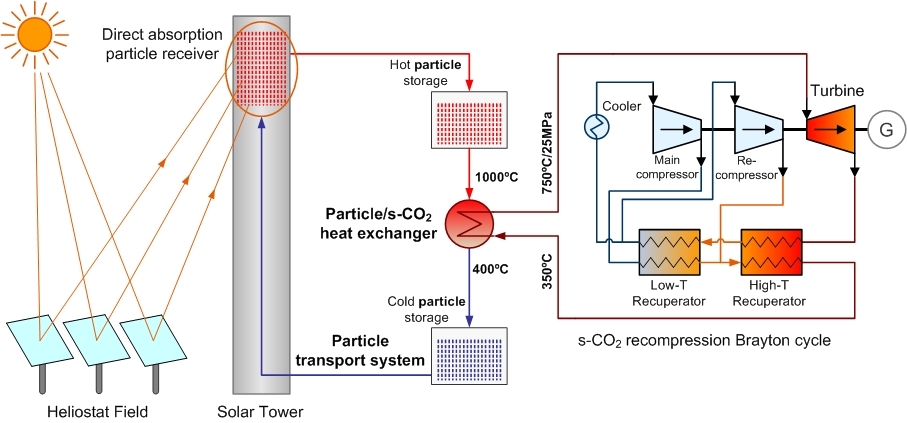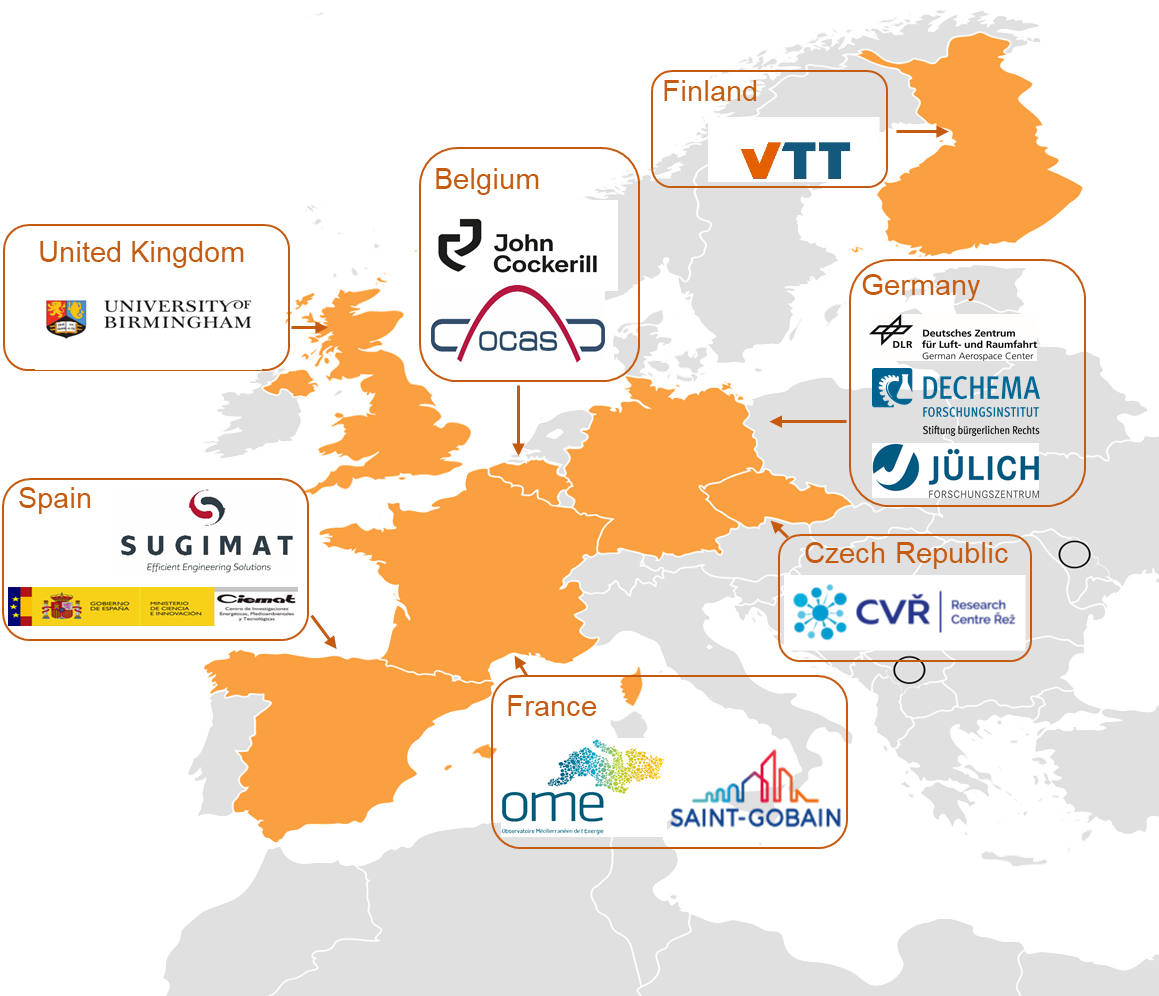Horizon 2020, 958418

| Laufzeit: | 01.11.2020 - 31.10.2024 |
|---|---|
| Geldgeber: | Europäische Union |
| Bearbeiter: | Michael Kerbstadt |
| Abteilung: | Materialien und Korrosion |
| Team: | Hochtemperaturlegierungen |
The current energy and climate challenges require energy conversion systems that are efficient and make use of renewable sources of energy. COMPASsCO2 aims to integrate solar energy into highly efficient supercritical CO2 Brayton power cycles for electricity production. Concentrated solar radiation is absorbed and stored in solid particles and then transferred to the sCO2. Unique properties of sCO2 (such as high density and low viscosity) allow reaching high efficiency of the energy conversion and very compact design of the components compared to conventional Rankine steam cycles. This can lead to new types of Concentrating Solar Power (CSP) plants with smaller heliostat fields, receivers and thermal energy storage systems compared to state-of-the-art molten salt tower plants, thus reducing CSP investment and making the technology more competitive. In addition, the use of a solid particle receiver has the advantage of being able to use these particles directly as a thermal storage medium, reducing system complexity and costs.
Previous projects (HiFlex) have been dedicated to the validation of the particle receivers for the tower of the CSP plant. For COMPASsCO2 the technology focus is the heat exchanger (HEX) in the tower. The key component for optimat HEX shall be validated in a relevant environment. To reach this goal, the consortium will produce, test, model and validate tailored particle-alloy combinations that meet the extreme operating conditions in terms of temperature, pressure, abrasion and hot oxidation/carburization of the heat exchanger tubes and the particles moving around/across them.
At DFI new materials and coatings for HEX particles and tubes will be developed. New heat carrier particle compositions will be tested. The main goal of this development is to increase optical and mechanical properties as well as the heat transfer of the HEX. On the other hand, new materials will also be developed for heat exchanger tubes in order to increase their erosion and corrosion protection. Cr3Si-based materials will be developed and characterized under the different corrosive/erosive media and applied on different steels and nickel-based alloys as material for heat exchanger tubes. The protective behaviour as well as the mechanical stability of the materials will be evaluated with regard to existing advanced austenitic steels and nickel-based alloys.
The project, financed by the European Community in the framework H2020 (Grant Agreement No. 958418), is coordinated by the German Aerospace Center (DLR). The project brings together a broad consortium formed of leading industry partners, SMEs, and research institutes in the concentrated solar thermal and materials science sector (twelve participants and seven countries). This unique constellation permits a validation of the concept at this initial stage of technology application (TLR 2<5).

Michael Kerbstadt
Tel. 069 / 7564-455
E-Mail: michael.kerbstadt
F. Sutter et al., Solar Energy Materials and Solar Cells 281 (2025)
M. Kerbstadt, K. Ma, E.M.H. White, A.J. Knowles, M.C. Galetz, High Temperature Corrosion of mater. 101 (2024)
M. Kerbstadt, E.M.H. White, M.C. Galetz, Materials 16 (2023)
A.S. Ulrich et al., Materials & Design 218 (2022)